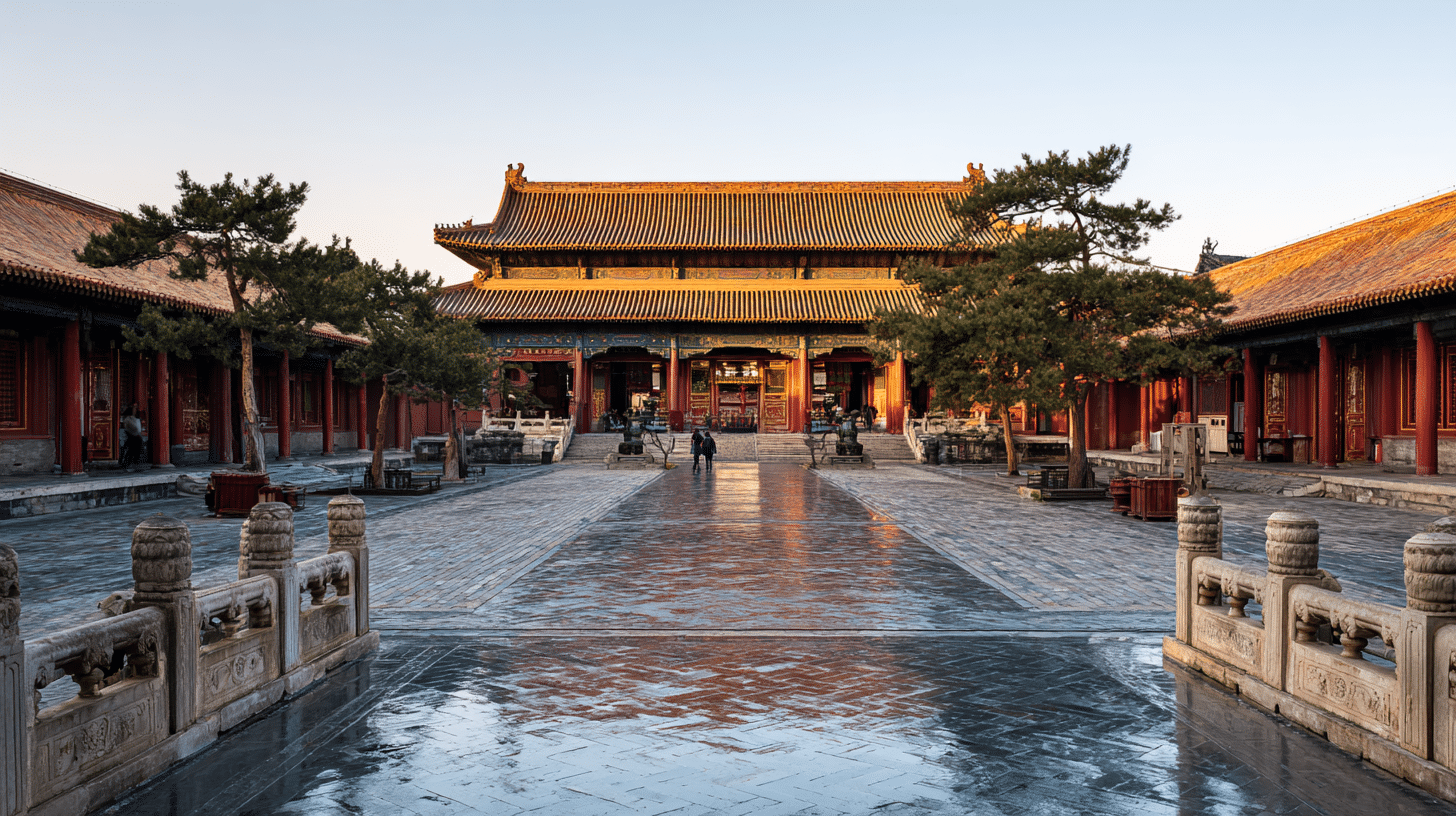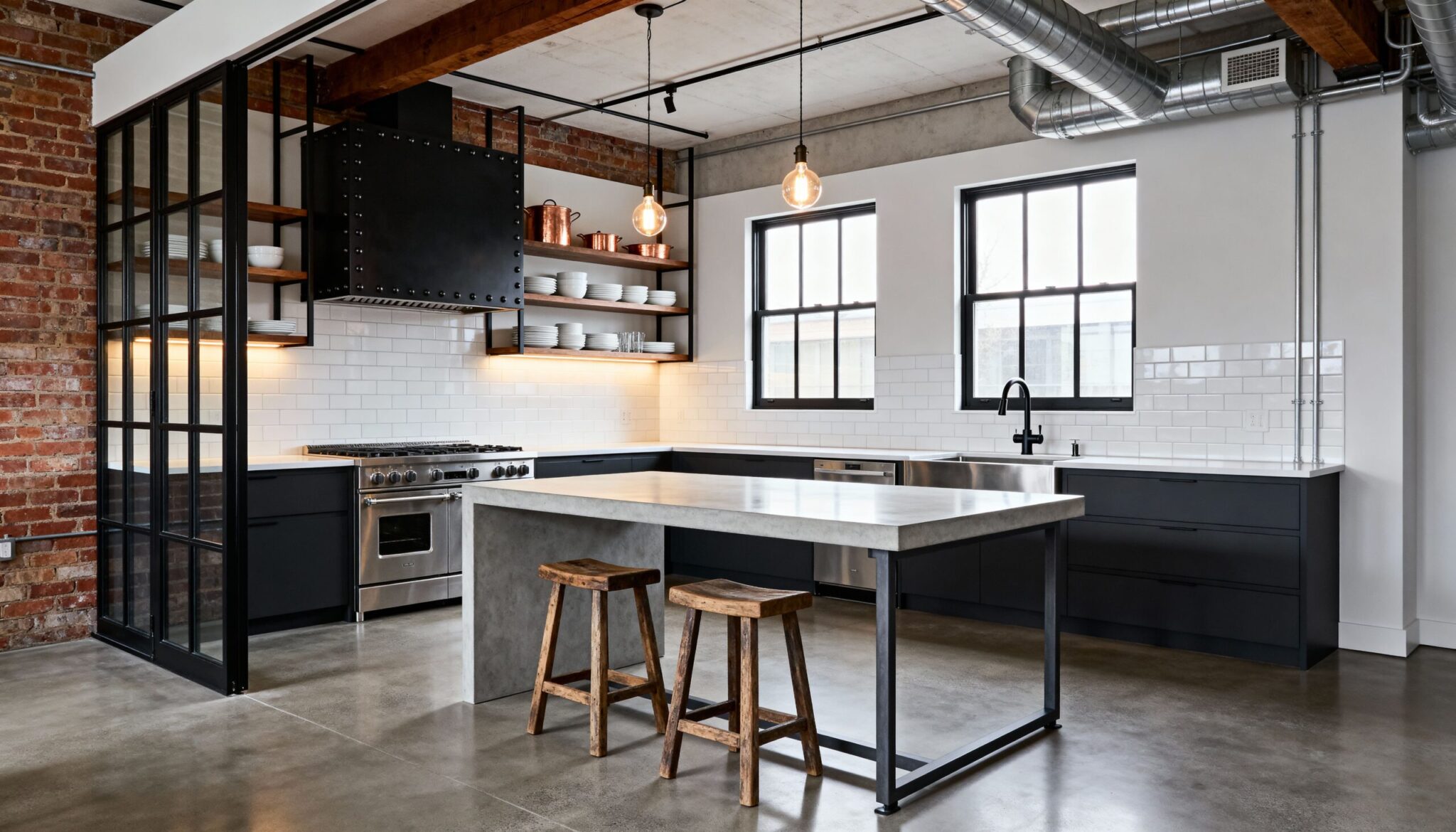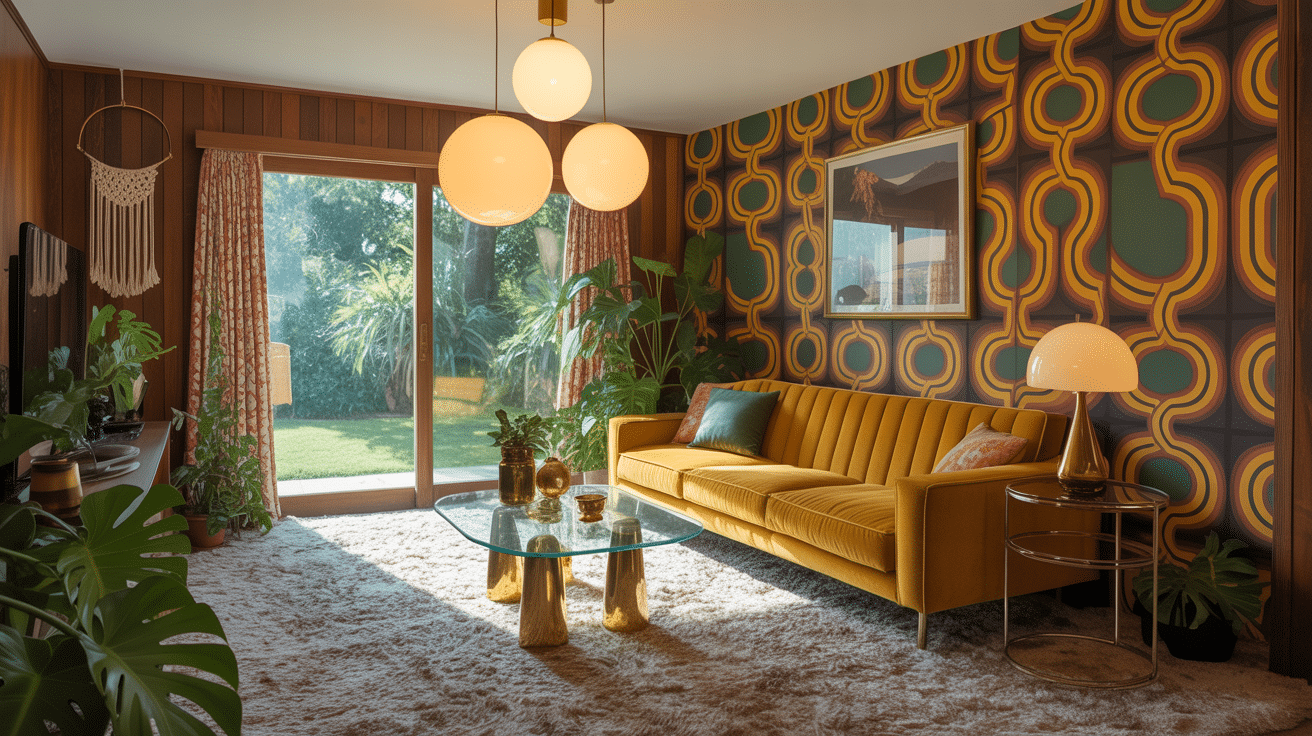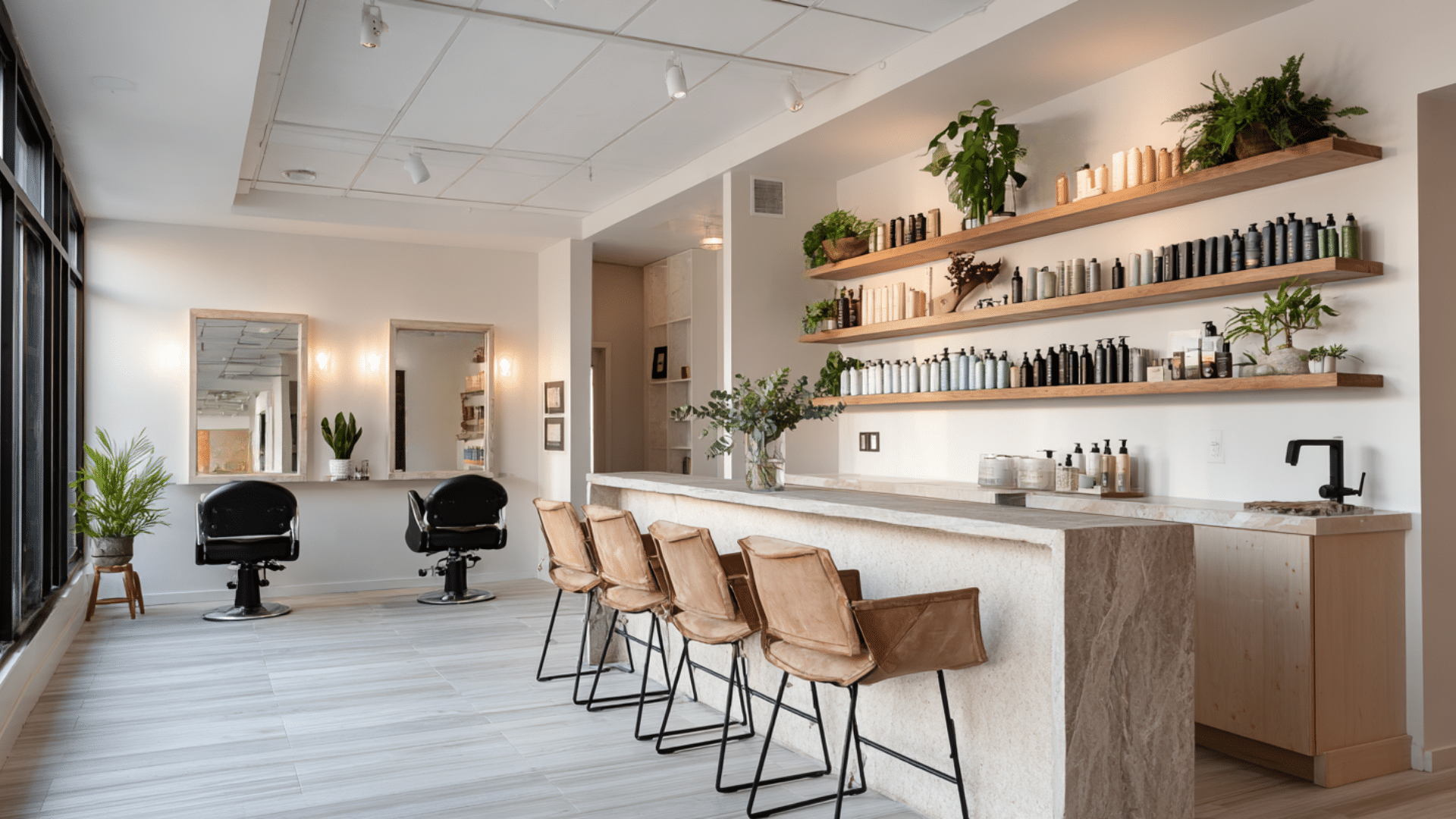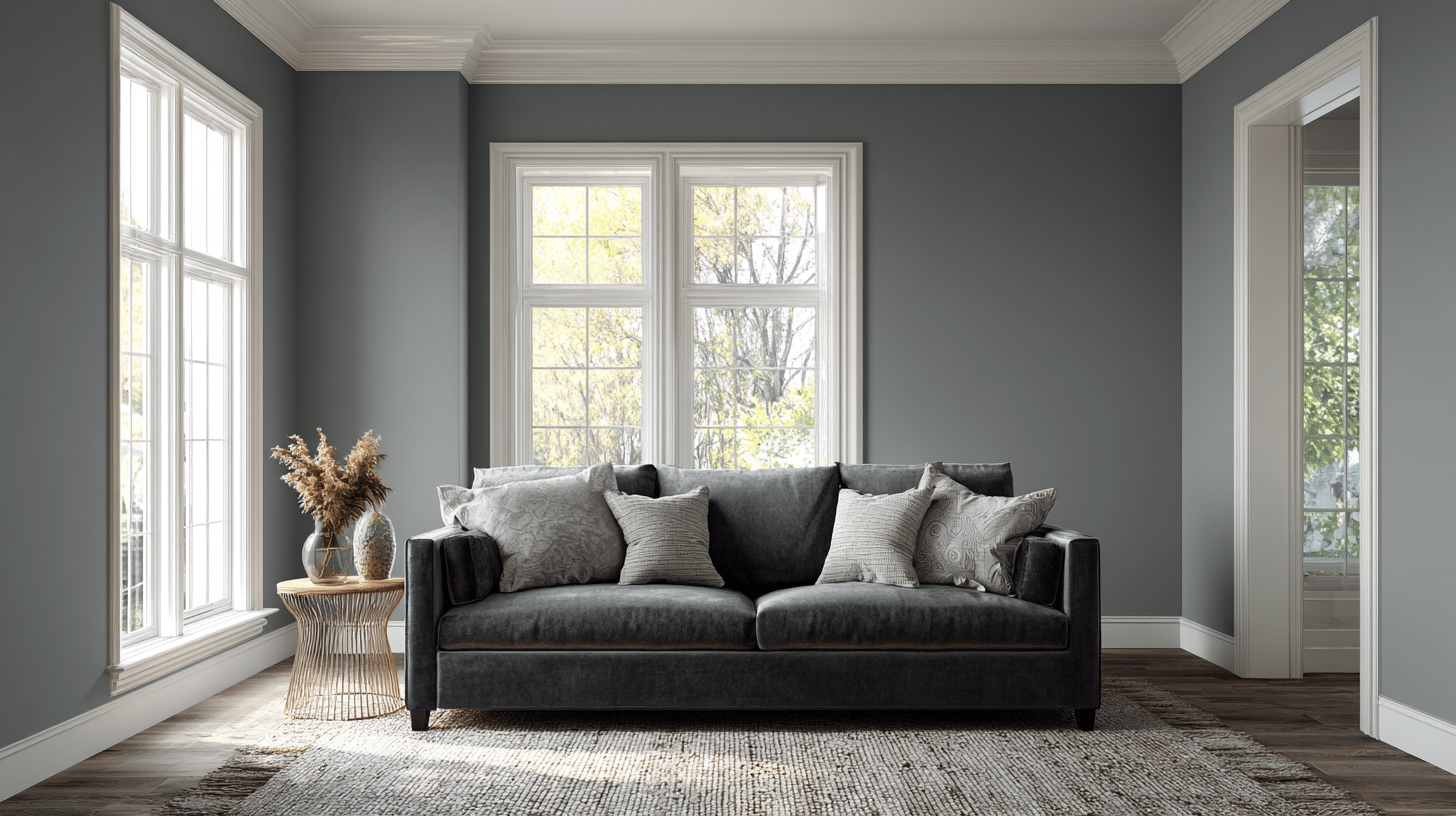What is Chinese Architecture?
This architecture is a unique building tradition shaped by cultural, philosophical, and principles that have lasted for more than 4,000 years.
Unlike many Western styles that focus on vertical stone construction, the Chinese method emphasizes horizontal layouts, symmetry, and the use of wooden frame structures. At its core, this tradition seeks harmony between humans and nature, often guided by feng shui.
Symmetry and balance reflect cosmic order, while courtyards and open spaces connect people with the surrounding landscape.
Distinctive curved roofs with upturned eaves serve both functional and symbolic purposes.
Though regional variations exist, the architecture has strongly influenced neighboring countries such as Japan, Korea, and Vietnam, becoming a cornerstone of East Asian design and culture.
Origins and Evolution of Traditional Chinese Architecture
The roots of the architecture stretch back to Neolithic villages of wood and earth.
By the Shang Dynasty, rammed-earth foundations and timber frameworks appeared, while the Zhou Dynasty formalized palaces and temples.
Innovations like mortise-and-tenon joinery, symmetry, and axial planning established enduring principles that shaped both the cultural and spiritual character of Chinese design.
As dynasties rose and fell, architecture evolved with cultural values, political power, and construction innovations:
- Qin Dynasty (221–206 BCE): Standardized construction and began monumental works, including the first Great Wall segments.
- Han Dynasty (206 BCE–220 CE): Expanded palaces, refined timber frameworks, and pioneered tomb architecture.
- Tang Dynasty (618–907 CE): Golden age marked by Buddhist temples, pagodas, and urban planning achievements.
- Song Dynasty (960–1279 CE): Introduced technical precision, lighter timber structures, and elegant pagoda designs.
- Ming Dynasty (1368–1644 CE): Built the Forbidden City, perfected glazed roof tiles, and strengthened Great Wall defenses.
- Qing Dynasty (1644–1912 CE): Merged Manchu and Han influences, creating elaborate gardens and ornate decorative details.
Famous Chinese Architectural Building Examples
This architecture spans palaces, temples, gardens, and fortifications, each offering insight into the nation’s culture, values, and architectural mastery across dynasties.
1. Imperial Palaces (The Forbidden City, Beijing)
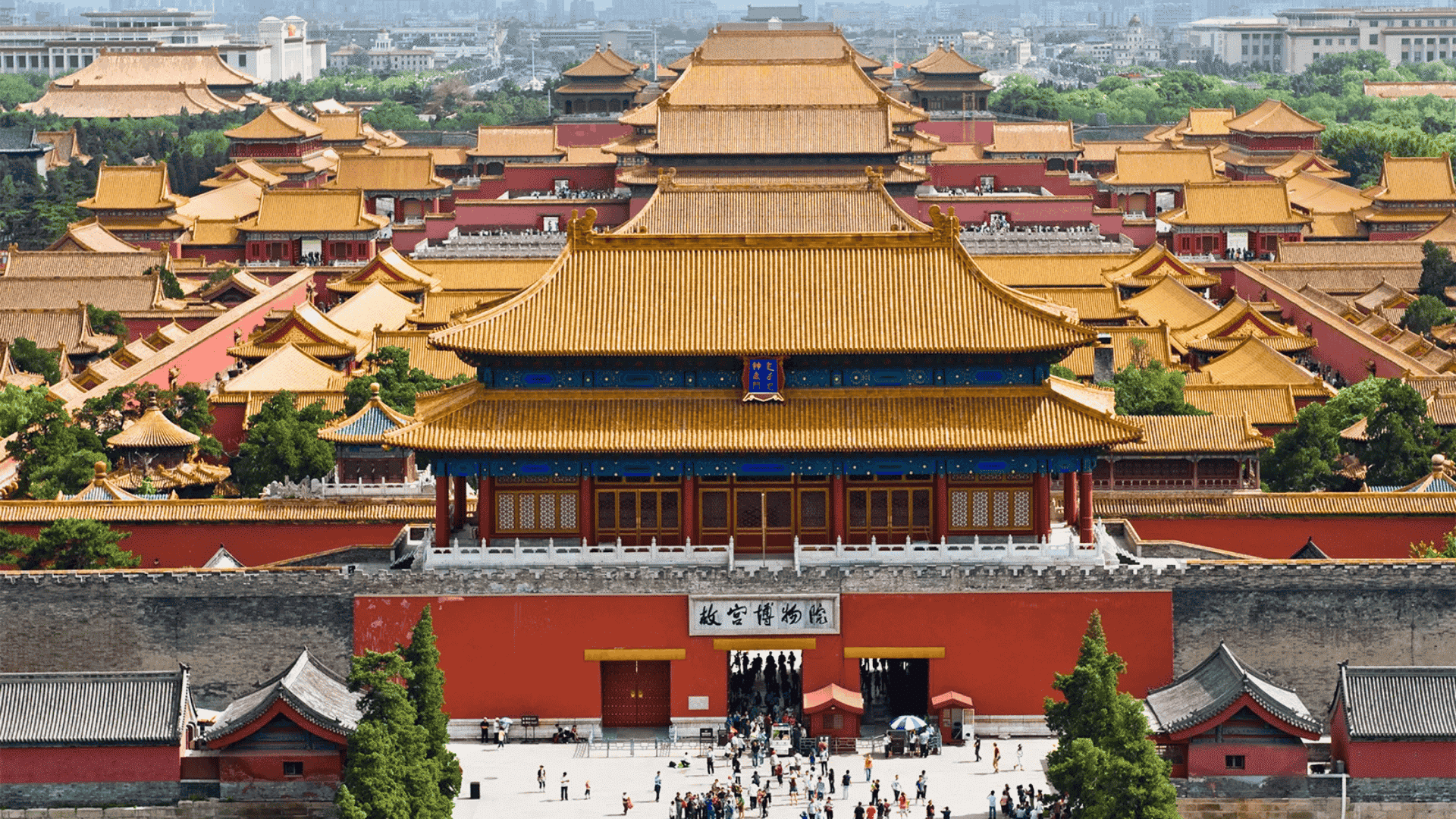
Imperial palaces represented dynastic authority and cosmic order, featuring grand layouts prepared to impress and reinforce hierarchy.
Every element was carefully planned to display power and connect the emperor to heaven itself.
2. Buddhist Temples and Pagodas (Temple of Heaven, Beijing)
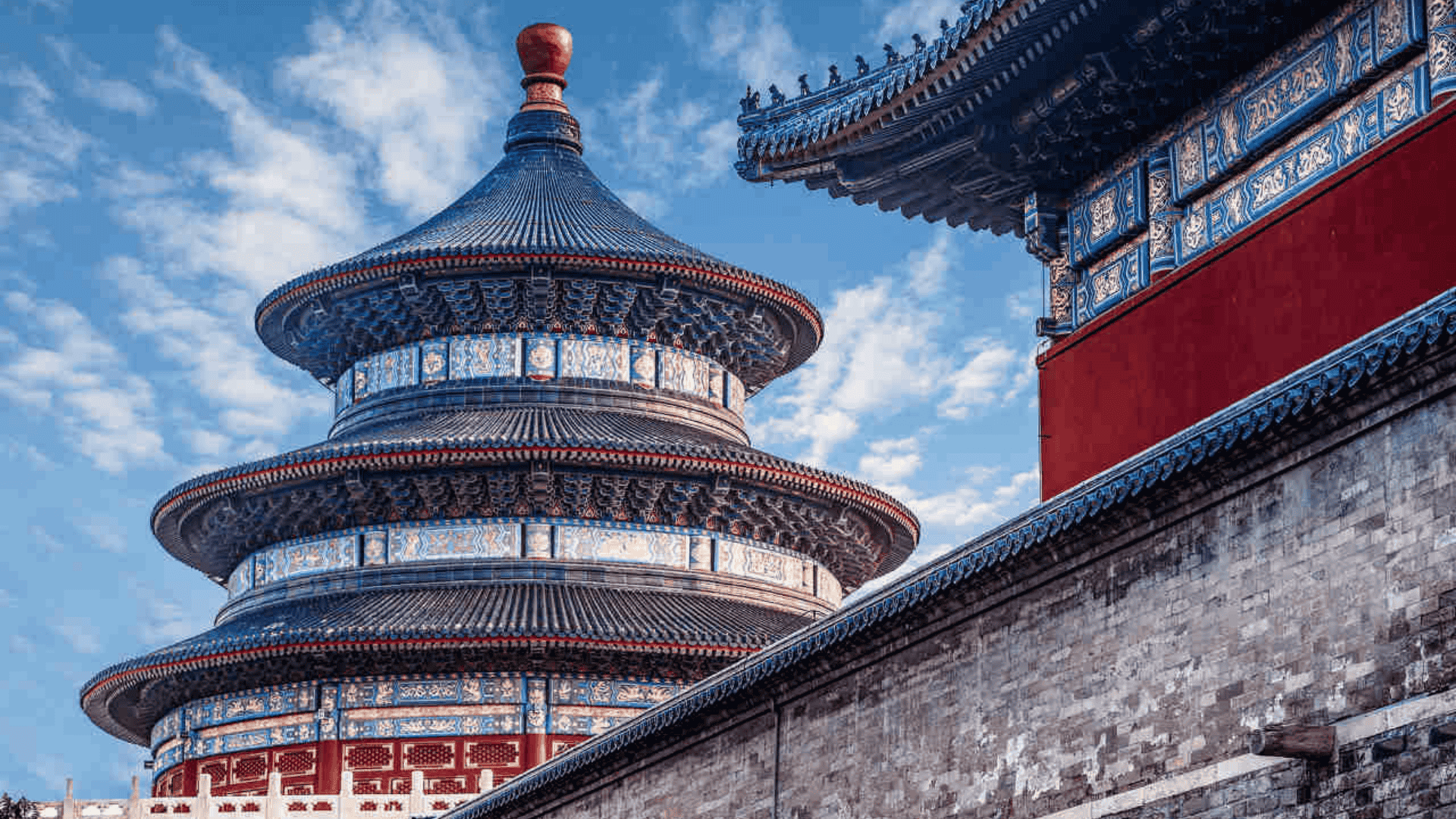
Temples and pagodas served spiritual functions, created to inspire devotion and connect earthly life with celestial harmony.
Multi-tiered structures guided worshippers upward toward spiritual enlightenment.
Intricate carvings and painted beams conveyed Buddhist teachings throughout temple grounds.
3. Courtyard Homes (Siheyuan Residences)
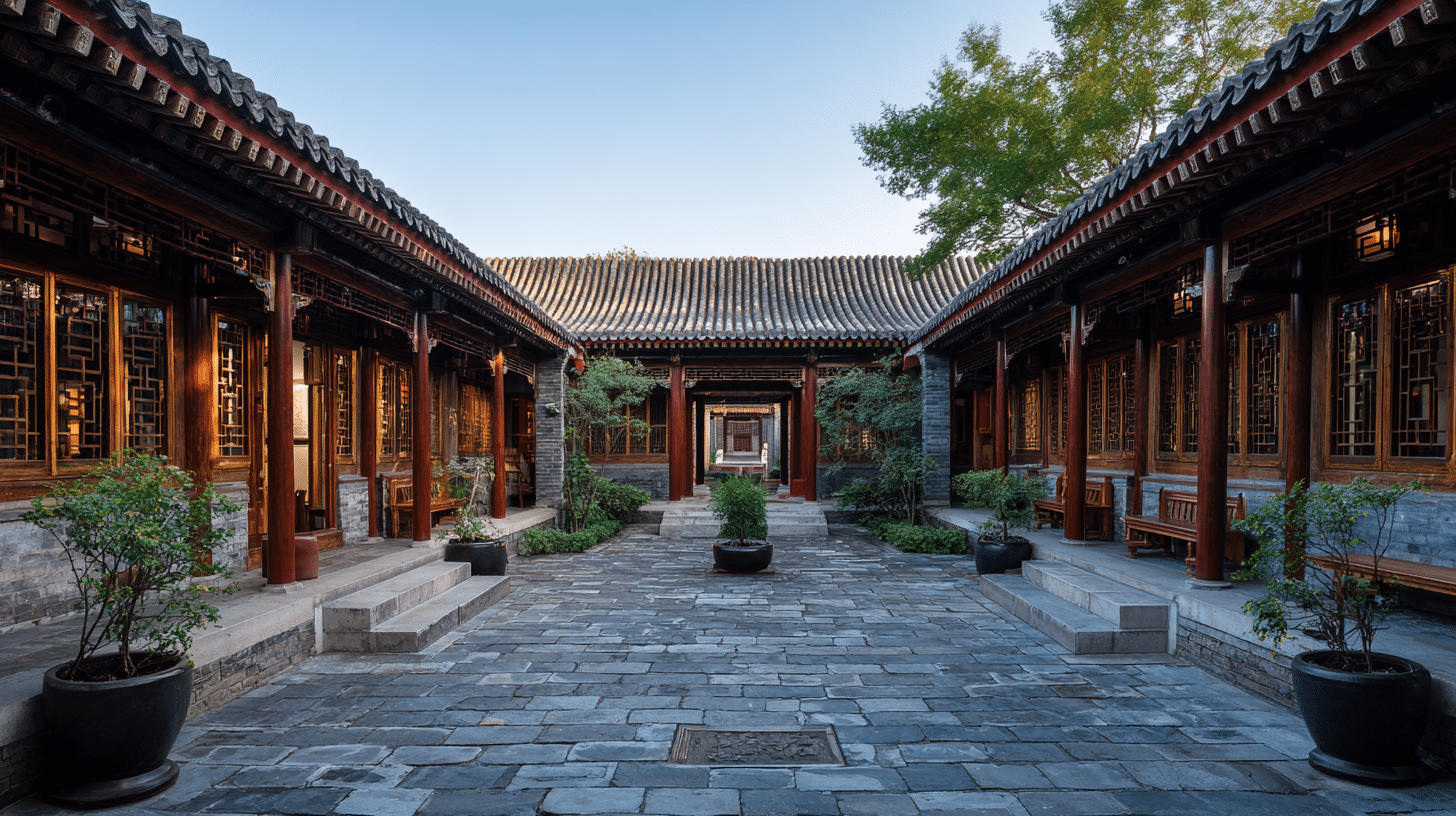
Traditional siheyuan homes emphasized family unity and privacy, structured around open central spaces for balance and comfort.
The courtyard became the heart of daily life, where multiple generations gathered.
4. Classical Gardens (Suzhou Gardens)
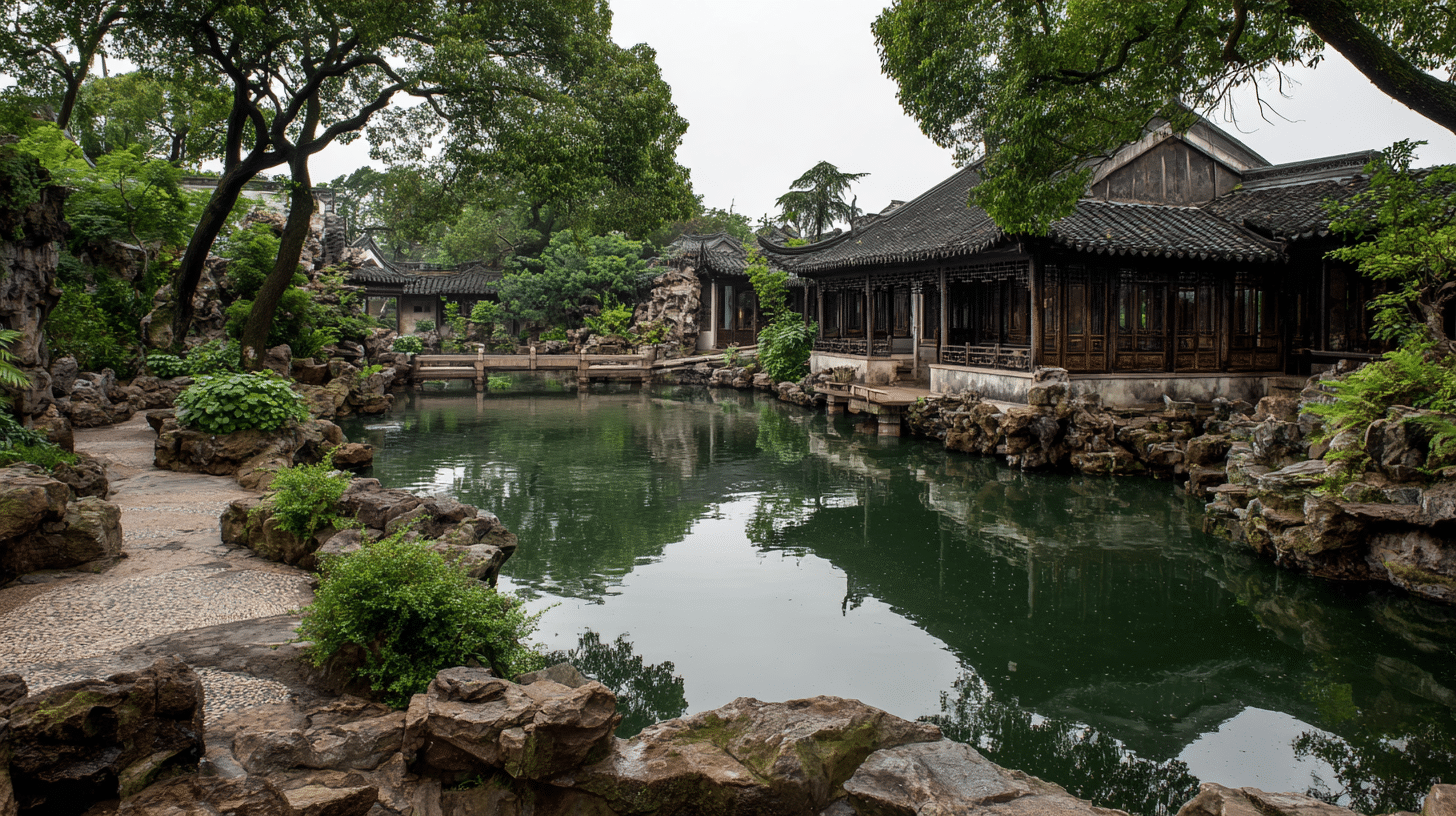
Classical gardens embodied harmony with nature, using artful layouts to create miniature landscapes for reflection and retreat.
Winding paths, borrowed scenery, and carefully placed pavilions created intimate spaces for contemplation.
5. Fortifications and Walls (The Great Wall of China)
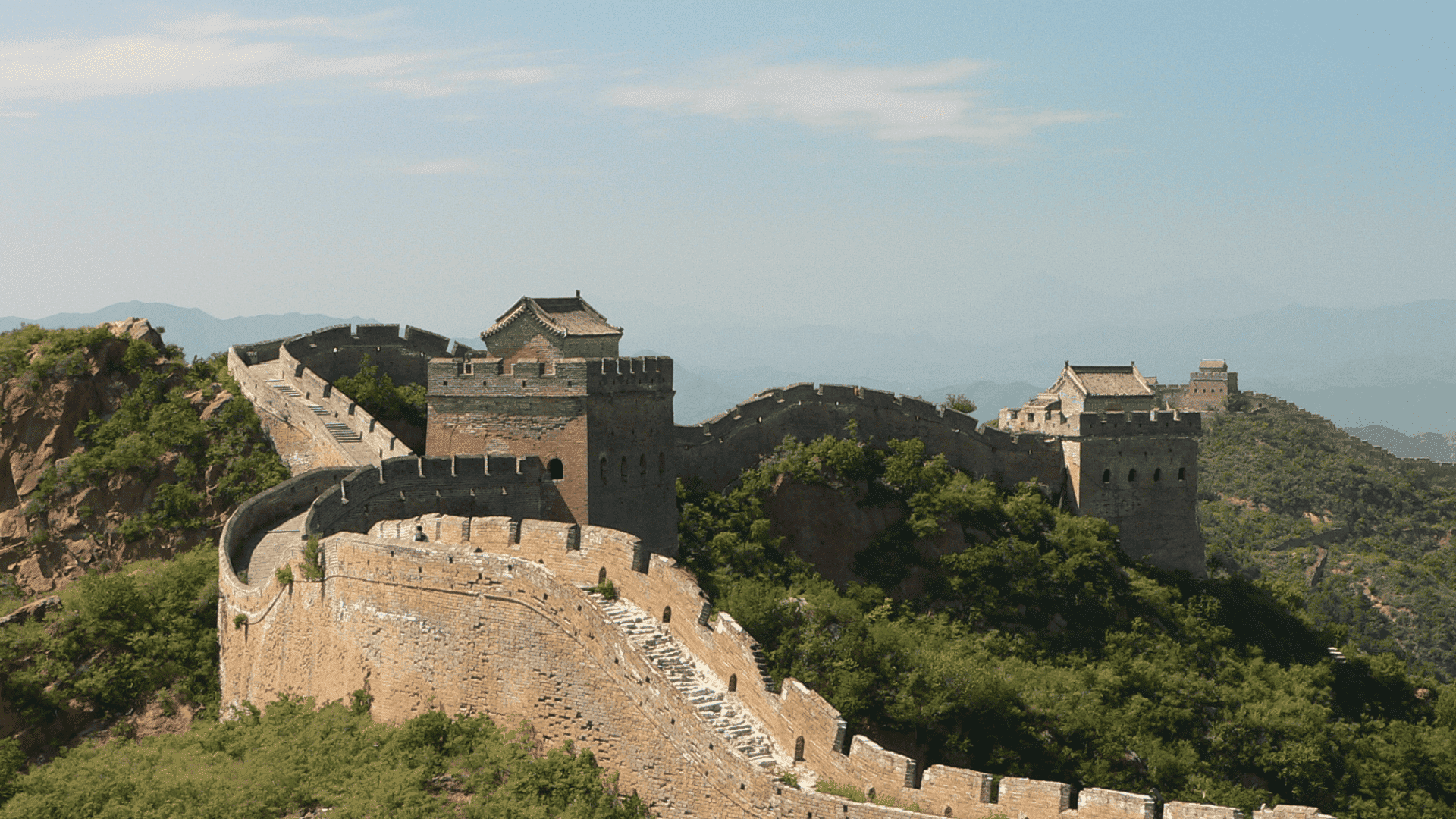
Fortifications displayed both defensive strength and cultural identity, created to secure borders and embody resilience.
The Great Wall stretched across diverse terrain, adapting its construction methods to local conditions.
Watchtowers and beacon systems enabled communication across vast distances.
6. Religious & Cultural Landmarks (Potala Palace, Tibet)

The Potala Palace merged politics and spirituality, standing as a monumental center of Tibetan Buddhism. Built into the mountainside, it dominates the Lhasa skyline and serves as both fortress and monastery.
7. Modern Interpretations (National Centre for the Performing Arts, Beijing)
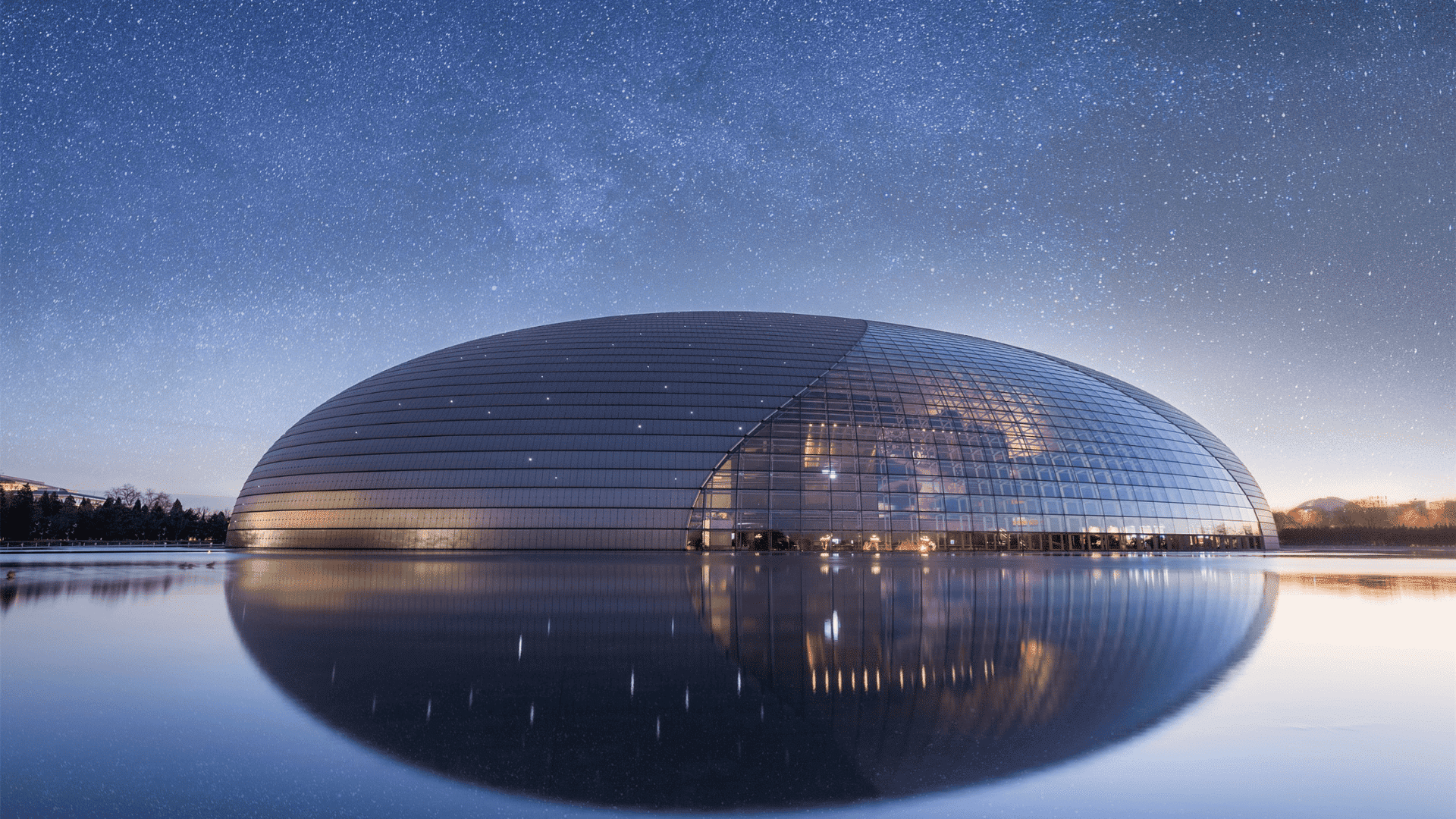
Modern landmarks blend traditional symbolism with futuristic architecture, reflecting China’s cultural pride in a global context.
The egg-shaped dome sits surrounded by water, creating stunning reflections that change throughout the day.
Architectural Features & Elements
The defining features of the architecture blend practicality with symbolic meaning, creating spaces that are functional, visually striking, and deeply rooted in cultural values.
- Roofs: Curved, upturned eaves, hip-gabled forms, and “flying eaves” offered both beauty and weather protection.
- Structural joinery: Dougong brackets and mortise-and-tenon systems added flexibility and seismic resistance without nails.
- Courtyards: Central courtyards brought in natural light, ventilation, and served as social gathering hubs.
- Orientation & symmetry: South-facing layouts symbolized prosperity, reflecting Feng Shui principles and hierarchical order.
- Decorative arts: Painted beams, tiled roof ridges with animal figures, carvings, and symbolic color palettes (red for luck, yellow for royalty).
- Material palette: Primarily wood and tile, complemented by stone, brick, or earth, depending on region and era.
The Evolution into Modern Chinese Architecture
Modern architecture mixes old traditions with new ideas.
Starting in the late 1800s and early 1900s, Western styles brought steel, glass, and fresh layouts to Chinese cities. At the same time, builders found ways to update old features like courtyards and sloped roofs to fit modern homes and public places.
The challenge has been to keep old historic buildings safe while also building new, tall skyscrapers like the Shanghai Tower.
Today, an eco-friendly layout is important, and many architects use traditional ideas like natural cooling, smart building directions, and local materials to create green, modern buildings.
Common Misconceptions & Myths
This architecture is often oversimplified, but recognizing the myths versus realities helps highlight its richness, diversity, and continued relevance in both tradition and modernity.
“All Chinese architecture looks the same.”
Reality: Styles differ widely across regions and dynasties, from imperial palaces to local courtyard houses and communal dwellings.
“Traditional equals outdated.”
Reality: Many features remain vital in modern eco-design, urban planning, and cultural identity, influencing architecture even today.
“It’s only about palaces and temples.”
Reality: Vernacular homes, gardens, and communal buildings are equally central to the architectural tradition.
By separating myths from facts, we gain a deeper appreciation of Chinese architecture’s diversity and enduring significance.
Wrapping it Up
Chinese architecture is more than building layout; it is part of a culture that has grown and changed for thousands of years.
Traditional Chinese architecture used wood frames, symmetry, and rich decoration, while modern styles mix old ideas with new ones. Both show creativity and strong cultural values.
Famous sites like the Forbidden City, Suzhou gardens, and Fujian Tulou highlight harmony with nature and community.
For architects, history lovers, or travelers, the architecture is still a source of beauty and learning. It connects the past with today and inspires people with its meaning, identity, and everlasting style.
Frequently Asked Questions (FAQ’s)
1. How Does Chinese Architecture Adapt to Different Regional Climates?
Building materials and roof designs vary by region to handle weather, from heavy snowfall in the north to humid conditions in the south.
2. What Role Does Symbolism Play in Chinese Architectural Decoration?
Colors, carvings, and roof ornaments often symbolize luck, power, and spirituality, reflecting cultural beliefs in every detail.
3. How Are Traditional Chinese Construction Techniques Relevant Today?
Techniques like mortise-and-tenon joinery provide earthquake resistance and are still valued for sustainable, flexible building methods.
4. What Are Some Modern Challenges in Preserving Traditional Chinese Architecture?
Urbanization, pollution, and modernization pressure preservation efforts, requiring a careful balance between protection and practical use.
5. How Do Feng Shui Principles Influence the Layout of Traditional Chinese Buildings?
Feng shui guides placement and orientation to align buildings with natural energy flows, promoting harmony and prosperity.

